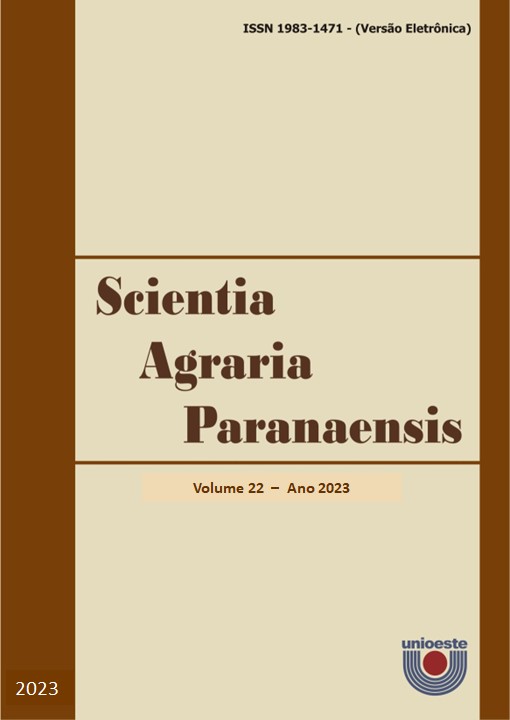Two methods of drying eucalyptus wood after impregnation with silver nanoparticles
DOI:
https://doi.org/10.18188/sap.v22.32629Abstract
Today there is exponential growth in the use of wood from the Eucalyptus genus in the wood industries. Given its importance in the forestry and wood marketing industry, there is a clear need to implement technologies that provide better quality wood and improved drying processes. Because of this, the objective of this study is to evaluate two methods of drying Eucalyptus grandis wood after impregnation with silver nanoparticles. To this end, logs of this species were used, which after making the test specimens and impregnation with silver nanoparticles of 40 and 100 ppm, they were subjected to drying in a climate-controlled chamber, with an average temperature of 20°C and relative humidity of 65%, and a laboratory oven with forced circulation at a constant temperature of 60°C, for subsequent moisture content analyses, drying rate and defects. The results showed that there was a greater loss of moisture in those pieces with an impregnation of 40 ppm when drying in an oven and air-conditioned chamber, as well as a higher drying rate in an oven. Furthermore, there was a higher incidence of defects in wood impregnated with 100 ppm and dried in an oven, with those impregnated with 40 ppm and dried in the same method presenting lower values than the control. The specific mass obtained average values similar to those referenced in the literature for the species worked. From the results of the present study, it was possible to conclude that the impregnation of silver nanoparticles brings drying benefits to Eucalyptus grandis wood.
Downloads
Published
How to Cite
Issue
Section
License
Aviso de Direito Autoral Creative Commons
Política para Periódicos de Acesso Livre
Autores que publicam nesta revista concordam com os seguintes termos:
1. Autores mantém os direitos autorais e concedem à revista o direito de primeira publicação, com o trabalho simultaneamente licenciado sob a Licença Creative Commons Attribution que permite o compartilhamento do trabalho com reconhecimento da autoria e publicação inicial nesta revista.2. Autores têm autorização para assumir contratos adicionais separadamente, para distribuição não-exclusiva da versão do trabalho publicada nesta revista (ex.: publicar em repositório institucional ou como capítulo de livro), com reconhecimento de autoria e publicação inicial nesta revista.
3. Autores têm permissão e são estimulados a publicar e distribuir seu trabalho online (ex.: em repositórios institucionais ou na sua página pessoal) a qualquer ponto antes ou durante o processo editorial, já que isso pode gerar alterações produtivas, bem como aumentar o impacto e a citação do trabalho publicado (Veja O Efeito do Acesso Livre).
Licença Creative Commons
Esta obra está licenciada com uma Licença Creative Commons Atribuição-NãoComercial-CompartilhaIgual 4.0 Internacional, o que permite compartilhar, copiar, distribuir, exibir, reproduzir, a totalidade ou partes desde que não tenha objetivo comercial e sejam citados os autores e a fonte.


